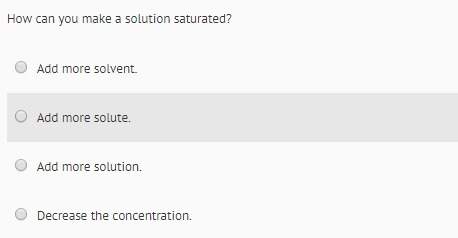
Chemistry, 09.11.2020 21:00 randlemccray1907
A pupil heated 1.24 g of copper carbonate strongly. The chemical reaction which
took place is represented by the equation:
CuCO3(s) → CuO(s) + CO2(g)
He then heated the 0.80 g of solid again. When he weighed it after cooling, its
mass was still 0.80 g. Explain why it had not changed in mass this time.
After the solid which remained had cooled, he weighed it.
He found that its mass was 0.80 g.
(i) Why did the pupil find a decrease in mass in this experiment?

Answers: 3


Other questions on the subject: Chemistry



Chemistry, 22.06.2019 09:30, mazielynn84
In 2002, the rare earth elements mine in mountain pass, california was closed because
Answers: 1

Chemistry, 22.06.2019 13:30, Sbeech7246
Why does asexual reproduction result in offspring with identicle genetic variation
Answers: 2
You know the right answer?
A pupil heated 1.24 g of copper carbonate strongly. The chemical reaction which
took place is repre...
Questions in other subjects:



Business, 30.11.2021 03:40


Mathematics, 30.11.2021 03:40

Social Studies, 30.11.2021 03:40




English, 30.11.2021 03:40




